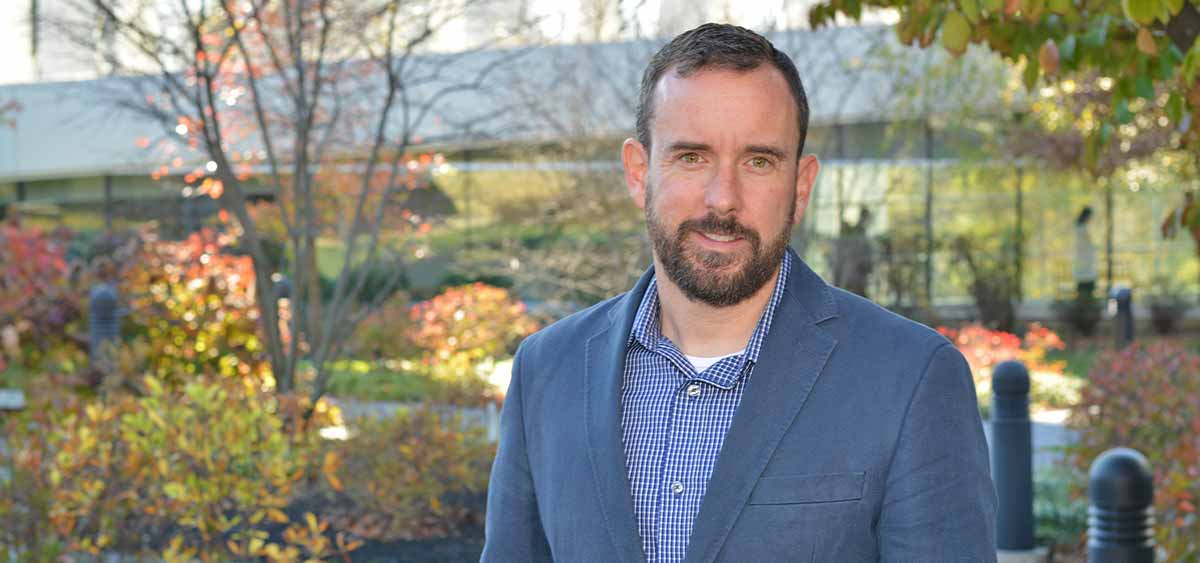
PHILADELPHIA (July 25, 2019) – Asf1, or anti-silencing function 1, is a histone chaperone involved in DNA replication and repair. The ability of Asf1 to direct acetylation of lysine 56 of histone H3 (H3K56) in DNA is an important regulatory step in these processes.
Now, researchers at Fox Chase Cancer Center have found that Asf1 recognizes lysine 14 of histone H3 (H3K14) and facilitates the acetylation of H3K56 by the lysine acetyltransferase (KAT) Rtt019-Vps75.
Andrew J. Andrews, PhD, associate professor in the Cancer Signaling and Epigenetics Program at Fox Chase, and his team attempted to map acetylation of H3 in Saccharomyces cerevisiae, more commonly known as baker’s yeast. Having many of the same essential cellular processes as humans, yeast is a much simpler organism and is often used to help understand basic molecular processes in humans.
“By looking at a simple system without the complex levels of regulatory functions seen in humans, we can get a better understanding of what Asf1 is doing before adding additional complexity,” Andrews said.
In Saccharomyces cerevisiae, Rtt109 is responsible for acetylation of H3K56 and requires two histone chaperones: Asf1 and Vps75, both of which increase the rate of, but not the location, of acetylation. Deletions of Rtt109 or Asf1 in yeast cells eliminates H3K56 acetylation, impairing DNA damage repair.
In this study, Andrews and colleagues wanted to test if histone pre-acetylation and histone chaperones function together to drive preferential acetylation of H3K56, or its selectivity.
They found that Asf1 functions with the histone acetylation state to alter selectivity of Rtt109-Vps75 and were able to map acetylation of H3 by Rtt109-Vps75.
Specifically, pre-acetylated H3K14ac/H4 functions with Asf1 to drive specific acetylation of H3K56 by Rtt109-Vps75. These changes were most apparent when Rtt109-Vps75 was in excess of Asf1-H3K14ac/H4 leading to complete acetylation of H3K56ac in less than five seconds.
“The histone acetylation of H3K14 is first modified by an enzyme—Gcn5—that acts on a more intact form of chromatin—nucleosome—and that happens before Asf1 and Rtt109 come into the picture,” Andrews said. “Asf1 selectively targets these modified histones to Rtt109-Vps75 to subsequently acetylate H3K56.”
At a 50,000-foot view, Andrews said, this gives us insight into how fidelity is maintained.
“It shows you that you are doing the right thing, at the right location, at the right time,” he said. “All of these things have to line up in order to trigger the next step.”
Based on these findings, Andrews and his team labeled the process a two-factor authentication, similar to what one might encounter when logging into a bank account from a new computer.
In order to better understand how this complex focuses acetylation of Asf1-H3/H4, Andrews and colleagues identified an acidic patch on the opposite face of the histone binding site. Mutations to this region altered Asf1-mediated crosstalk that changed Rtt109-Vps75 selectivity. Their work also demonstrated that mutations initially identified to prevent Asf1’s anti-silencing function were required to recognize H3K14ac. This suggests that Asf1-H3K14ac interaction is required to reactivate silenced genes.
In the future, Andrews and his team would like to investigate whether Asf1 has the same functionality in the human system as it does in yeast.
The paper, “Two factor authentication: Asf1 mediates crosstalk between H3 K14 and K56 acetylation,” was published in Nucleic Acids Research.
This research was supported by National Institutes of Health grants R01 GM102503 and T32CA009035-36A1; a gift from John C. and Robin L Spurlino, with corporate matching funds from Johnson & Johnson; and an appropriation from the Commonwealth of Pennsylvania to the Fox Chase Cancer Center.